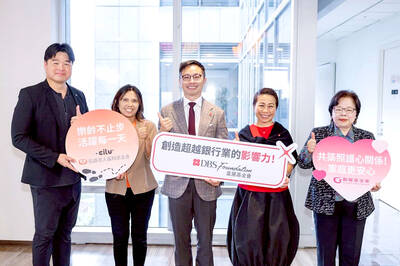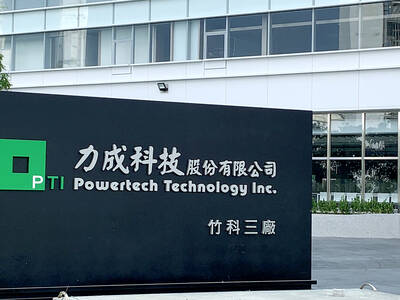For years South Koreans have flooded into the Philippines, finding it one of the cheapest places in Southeast Asia for recreation, study and investment.
From Baguio City in the north to Davao in the south and all major cities in between, distinctive communities have risen with Korean restaurants, grocery stores, beauty parlors, hotels, resorts and bars.
Even Korean television dramas have become popular among Filipinos, having first been dubbed into the local language.
An estimated 75,000 Koreans now study in the Philippines, mainly learning English. It has also become a popular destination for retirees seeking year-round warm weather, cheap golf courses and apartments to live in.
South Koreans make up the largest number of tourists visiting the Philippines with 660,000 arrivals last year, roughly 20 percent of the year’s total.
Yet the number of Koreans visiting is in decline. In the first 10 months of this year South Korean arrivals totaled 522,410 or 19.77 percent of the total, down 1.34 percent from the same period last year.
“I expect there will be some drop in tourism numbers and some investments may be put on hold but I don’t see it lasting,” said Jae Jang, president of the Korean Chamber of Commerce Philippines.
But the economic crisis is tightening its grip. While Korean firm Grand Utopia Inc said recently it will go ahead with a US$120 million resort and casino complex at the former US naval base at Subic Bay north of Manila, other projects are being put on ice.
Plans by shipbuilder Hanjin to develop a US$2 billion shipyard in the port of Cagayan de Oro in Mindanao island are now on hold.
In 2005 Hanjin built the world’s fourth-largest shipyard in Subic Bay and today employs 18,000 people. The shipbuilder has not commented on what impact the global downturn in shipping has had on the yard’s order book.
A recent report by local television station ABS-CBN, meanwhile, said Baguio has seen its Korean population fall dramatically to 4,000 this year from 10,000 last year because of the financial crisis.
Baguio, with its dozens of language schools, has been a popular draw for Korean students for more than 15 years.
“The Philippines is popular among middle-class [South] Koreans because it is close to Korea, about three hours by plane, and is cheap,” Jang said.
Jang, who has lived in the Philippines for more than 25 years, said when he arrived there were fewer than 1,000 Koreans living in the country. Today the resident population is around 120,000.
Although Korean tourists still top the Department of Tourism visitor arrivals list, the number visiting Cebu City is dropping, said Charlie Shin, vice chairman of the United Korean Community Association in Cebu.
He said last year around 3,500 Koreans visited Cebu every week but today the figure is around 2,000.
Shin said South Korean airlines has cut the number of weekly flights from Seoul to Cebu to 22, from 28.
Shin, who has lived in Cebu for the past five years, runs his own medical tourism business, which he said was doing “well considering what has happened in recent months.”
He said he was optimistic Koreans would continue to invest in the Philippines despite the financial crisis.

The DBS Foundation yesterday announced the launch of two flagship programs, “Silver Motion” and “Happier Caregiver, Healthier Seniors,” in partnership with CCILU Ltd, Hondao Senior Citizens’ Welfare Foundation and the Garden of Hope Foundation to help Taiwan face the challenges of a rapidly aging population. The foundation said it would invest S$4.91 million (US$3.8 million) over three years to foster inclusion and resilience in an aging society. “Aging may bring challenges, but it also brings opportunities. With many Asian markets rapidly becoming super-aged, the DBS Foundation is working with a regional ecosystem of like-minded partners across the private, public and people sectors

BREAKTHROUGH TECH: Powertech expects its fan-out PLP system to become mainstream, saying it can offer three-times greater production throughput Chip packaging service provider Powertech Technology Inc (力成科技) plans to more than double its capital expenditures next year to more than NT$40 billion (US$1.31 billion) as demand for its new panel-level packaging (PLP) technology, primarily used in chips for artificial intelligence (AI) applications, has greatly exceeded what it can supply. A significant portion of the budget, about US$1 billion, would be earmarked for fan-out PLP technology, Powertech told investors yesterday. Its heavy investment in fan-out PLP technology over the past 10 years is expected to bear fruit in 2027 after the technology enters volume production, it said, adding that the tech would

YEAR-END BOOST: The holiday shopping season in the US and Europe, combined with rising demand for AI applications, is expected to drive exports to a new high, the NDC said Taiwan’s business climate monitor improved last month, transitioning from steady growth for the first time in five months, as robust global demand for artificial intelligence (AI) products and new iPhone shipments boosted exports and corporate sales, the National Development Council (NDC) said yesterday. The council uses a five-color system to measure the nation’s economic state, with “green” indicating steady growth, “red” suggesting a boom and “blue” reflecting a recession. “Yellow-red” and “yellow-blue” suggest a transition to a stronger or weaker condition. The total score of the monitor’s composite index rose to 35 points from a revised 31 in August, ending a four-month

RUN IT BACK: A succesful first project working with hyperscalers to design chips encouraged MediaTek to start a second project, aiming to hit stride in 2028 MediaTek Inc (聯發科), the world’s biggest smartphone chip supplier, yesterday said it is engaging a second hyperscaler to help design artificial intelligence (AI) accelerators used in data centers following a similar project expected to generate revenue streams soon. The first AI accelerator project is to bring in US$1 billion revenue next year and several billion US dollars more in 2027, MediaTek chief executive officer Rick Tsai (蔡力行) told a virtual investor conference yesterday. The second AI accelerator project is expected to contribute to revenue beginning in 2028, Tsai said. MediaTek yesterday raised its revenue forecast for the global AI accelerator used